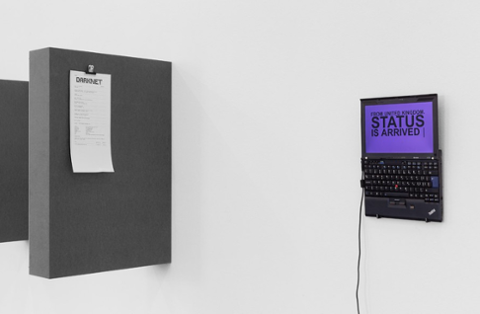 Huge numbers of Americans turned to mobile devices and social networks to complete their holiday shopping, according to post-Christmas numbers released by IBM. Mobile devices accounted for up to 48 percent of all online shopping traffic, up 28.3 percent from the same period in 2012. In all, mobile sales represented 29 percent of all online sales, an increase of 40 percent from the previous year; shoppers preferred using their smartphones (which drove 28.5 percent of all online traffic) over tablets (18.1 percent of traffic), although tablet users tended to spend more ($95.61 per order) than smartphone users ($85.11 per order). Those using a mobile device with Apple’s iOS also spent more ($93.94 per order) than Android users ($48.10 per order); overall, iOS was responsible for a higher percentage of online traffic and sales. On the social-networking front, Pinterest referrals drove an average of $86.83 per order, outpacing Facebook, which averaged $72.01 per order. However, IBM noted, “Facebook referrals converted sales at nearly four times the rate of Pinterest referrals, perhaps indicating stronger confidence in network recommendations.” But while it might have been the best of times for mobile devices—at least from a traffic perspective—a spike in online shopping delayed many Amazon.com deliveries via UPS and FedEx (in a statement, UPS blamed “heavy holiday volume”). According to The Washington Post (which is owned by Amazon CEO Jeff Bezos), “a combination of bad weather, shoppers waiting until the last minute and the overwhelming surge in online buying resulted in some packages not getting under the Christmas tree in time.” Amazon is trying to make those affected shoppers whole with $20 gift cards and refunds on shopping. For years, online-shopping advocates have heralded e-commerce as the future: find the object of your desire, click “Buy,” and then arrange for shipping—all within a few minutes. But that simple process involves a whole lot of backend infrastructure, from the datacenters that store customer information to the physical trucks and planes delivering packages from Point A to B. That infrastructure clearly has its limits. Image: mtkang/Shutterstock.com
Huge numbers of Americans turned to mobile devices and social networks to complete their holiday shopping, according to post-Christmas numbers released by IBM. Mobile devices accounted for up to 48 percent of all online shopping traffic, up 28.3 percent from the same period in 2012. In all, mobile sales represented 29 percent of all online sales, an increase of 40 percent from the previous year; shoppers preferred using their smartphones (which drove 28.5 percent of all online traffic) over tablets (18.1 percent of traffic), although tablet users tended to spend more ($95.61 per order) than smartphone users ($85.11 per order). Those using a mobile device with Apple’s iOS also spent more ($93.94 per order) than Android users ($48.10 per order); overall, iOS was responsible for a higher percentage of online traffic and sales. On the social-networking front, Pinterest referrals drove an average of $86.83 per order, outpacing Facebook, which averaged $72.01 per order. However, IBM noted, “Facebook referrals converted sales at nearly four times the rate of Pinterest referrals, perhaps indicating stronger confidence in network recommendations.” But while it might have been the best of times for mobile devices—at least from a traffic perspective—a spike in online shopping delayed many Amazon.com deliveries via UPS and FedEx (in a statement, UPS blamed “heavy holiday volume”). According to The Washington Post (which is owned by Amazon CEO Jeff Bezos), “a combination of bad weather, shoppers waiting until the last minute and the overwhelming surge in online buying resulted in some packages not getting under the Christmas tree in time.” Amazon is trying to make those affected shoppers whole with $20 gift cards and refunds on shopping. For years, online-shopping advocates have heralded e-commerce as the future: find the object of your desire, click “Buy,” and then arrange for shipping—all within a few minutes. But that simple process involves a whole lot of backend infrastructure, from the datacenters that store customer information to the physical trucks and planes delivering packages from Point A to B. That infrastructure clearly has its limits. Image: mtkang/Shutterstock.com Online Holiday Shopping Spiked, Delaying Some Packages
 Huge numbers of Americans turned to mobile devices and social networks to complete their holiday shopping, according to post-Christmas numbers released by IBM. Mobile devices accounted for up to 48 percent of all online shopping traffic, up 28.3 percent from the same period in 2012. In all, mobile sales represented 29 percent of all online sales, an increase of 40 percent from the previous year; shoppers preferred using their smartphones (which drove 28.5 percent of all online traffic) over tablets (18.1 percent of traffic), although tablet users tended to spend more ($95.61 per order) than smartphone users ($85.11 per order). Those using a mobile device with Apple’s iOS also spent more ($93.94 per order) than Android users ($48.10 per order); overall, iOS was responsible for a higher percentage of online traffic and sales. On the social-networking front, Pinterest referrals drove an average of $86.83 per order, outpacing Facebook, which averaged $72.01 per order. However, IBM noted, “Facebook referrals converted sales at nearly four times the rate of Pinterest referrals, perhaps indicating stronger confidence in network recommendations.” But while it might have been the best of times for mobile devices—at least from a traffic perspective—a spike in online shopping delayed many Amazon.com deliveries via UPS and FedEx (in a statement, UPS blamed “heavy holiday volume”). According to The Washington Post (which is owned by Amazon CEO Jeff Bezos), “a combination of bad weather, shoppers waiting until the last minute and the overwhelming surge in online buying resulted in some packages not getting under the Christmas tree in time.” Amazon is trying to make those affected shoppers whole with $20 gift cards and refunds on shopping. For years, online-shopping advocates have heralded e-commerce as the future: find the object of your desire, click “Buy,” and then arrange for shipping—all within a few minutes. But that simple process involves a whole lot of backend infrastructure, from the datacenters that store customer information to the physical trucks and planes delivering packages from Point A to B. That infrastructure clearly has its limits. Image: mtkang/Shutterstock.com
Huge numbers of Americans turned to mobile devices and social networks to complete their holiday shopping, according to post-Christmas numbers released by IBM. Mobile devices accounted for up to 48 percent of all online shopping traffic, up 28.3 percent from the same period in 2012. In all, mobile sales represented 29 percent of all online sales, an increase of 40 percent from the previous year; shoppers preferred using their smartphones (which drove 28.5 percent of all online traffic) over tablets (18.1 percent of traffic), although tablet users tended to spend more ($95.61 per order) than smartphone users ($85.11 per order). Those using a mobile device with Apple’s iOS also spent more ($93.94 per order) than Android users ($48.10 per order); overall, iOS was responsible for a higher percentage of online traffic and sales. On the social-networking front, Pinterest referrals drove an average of $86.83 per order, outpacing Facebook, which averaged $72.01 per order. However, IBM noted, “Facebook referrals converted sales at nearly four times the rate of Pinterest referrals, perhaps indicating stronger confidence in network recommendations.” But while it might have been the best of times for mobile devices—at least from a traffic perspective—a spike in online shopping delayed many Amazon.com deliveries via UPS and FedEx (in a statement, UPS blamed “heavy holiday volume”). According to The Washington Post (which is owned by Amazon CEO Jeff Bezos), “a combination of bad weather, shoppers waiting until the last minute and the overwhelming surge in online buying resulted in some packages not getting under the Christmas tree in time.” Amazon is trying to make those affected shoppers whole with $20 gift cards and refunds on shopping. For years, online-shopping advocates have heralded e-commerce as the future: find the object of your desire, click “Buy,” and then arrange for shipping—all within a few minutes. But that simple process involves a whole lot of backend infrastructure, from the datacenters that store customer information to the physical trucks and planes delivering packages from Point A to B. That infrastructure clearly has its limits. Image: mtkang/Shutterstock.com 